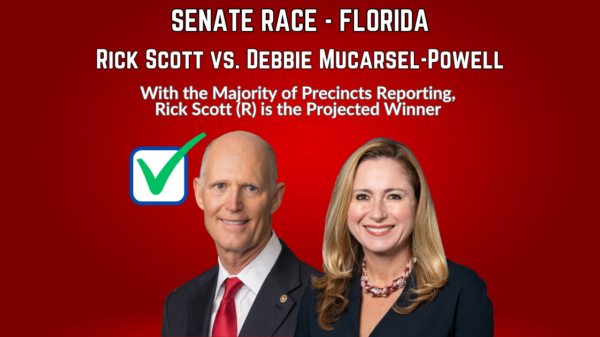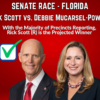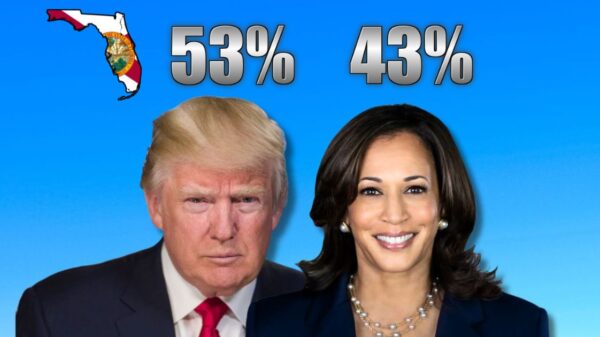On Thursday, freshman U.S. Rep. Debbie Mucarsel-Powell, D-Fla., sent a letter to FEMA Acting Administrator Pete Gaynor expressing her concern over the National Flood Insurance Program’s (NFIP) risk rating methodology. In her letter, Mucarsel-Powell asks FEMA to answer specific questions about ensuring affordability of flood insurance rates for coastal communities that are facing increased flood risks due, in part, to climate change. The full text of the letter can be found below:
Dear Acting Administrator Gaynor:
I am writing to express my concern regarding the future and affordability of the National Flood Insurance Program (NFIP). Specifically, I am troubled by the lack of transparency in, and communication about, FEMA’s new risk assessment process, the disparate impact this process may have on coastal communities, and the lack of enforcement for FEMA’s NFIP policies and oversight for payments to third-parties. My constituents in Florida’s 26th Congressional District are profoundly impacted by any changes to the Risk Rating procedure, and they deserve clarity regarding how proposed changes to the rating process and risk calculation pricing structures will impact their policy premiums.
Understandably, cost remains the primary concern for my constituents. Considering housing affordability challenges throughout my state, large and unexpected increases in flood insurance premiums could result in many residents of my district being driven from their lifelong homes. Although I am well aware that premium costs are impacted by a wide array of issues, I am concerned that FEMA’s new risk pricing model under development has not been fairly communicated in a transparent manner and may contribute to rising costs.
A key factor to lowering overall costs is enrolling as many homes into the flood insurance program as possible, and as such I support efforts such as FEMA’s Moonshot Starter Kit to double the covered pool by 2023. However, it is also critical that FEMA ensure that all those within the flood zones that are mandated to carry insurance are doing so. Unfortunately, compliance with these policies is occurring at a remarkably low rate, which results in higher premium costs for those who are simply in compliance with the rules.
These issues are further exacerbated by the threat of climate change. Due to changing weather patterns, flooding is occurring in places that are not incorporated in the flood plains. For example, Hurricane Harvey flooded over 200,000 properties, but only approximately 56,000 were in the mandatory purchase floodplain. It is important that any future calculation take changing climate patterns into account and expand flood hazard areas to include zones that are now in danger of flooding that had not been previously – including areas subject to forms of flooding not traditionally considered, such as excess rainfall absent a tropical event, excessive snowmelt, etc.
Furthermore, the lack of oversight for Write-Your-Own (WYO) companies is troubling. As of 2016, FEMA is paying WYO adjusters in advance, with little verification that these payment rates are the appropriate amount for these third-party claims adjusters. Recent estimates show that WYO adjusters are keeping 30 percent of all premium money that is collected, a rate that is lacking in justification. Although we are encouraged to see that FEMA has issued an Advanced Notice of Proposed Rulemaking (ANPRM) on July 9, 2019, we hope to see this process continue in an expeditious manner. It is our understanding that FEMA was to have conducted this rulemaking by 2013. These rulemaking sessions are critical for providing oversight of a potential source of administrative waste.
To identify the steps that FEMA is taking to address premium costs, I ask that you answer the following questions by Friday, July 26, 2019.
What steps are you taking to ensure that all homeowners with a federally-backed mortgage are enrolled in flood insurance? How can Congress support your efforts legislatively to ensure people who are supposed to have coverage do? What can we legislatively do to help?
When do you estimate that the ANPRM regarding the Write-Your-Own companies that was originally scheduled for 2013 will be complete and the final rule will be promulgated?
In lieu of Congressional action to update the flood risk maps, what steps is FEMA taking to consider future anticipated flood risk, especially given the observed impacts of climate change?
Do you intend to continue your reinsurance agreements from recent years to keep premium costs down?
What progress has FEMA made in establishing guidelines for property owners other than building elevation to reduce flood risk, such as building materials and floodproofing? How might implementation of these mitigation methods affect risk premium rates?
When will FEMA present a full review and analysis of Risk Rating 2.0 methodology and resulting premium indications?
Your prompt response to these questions would be greatly appreciated.





















